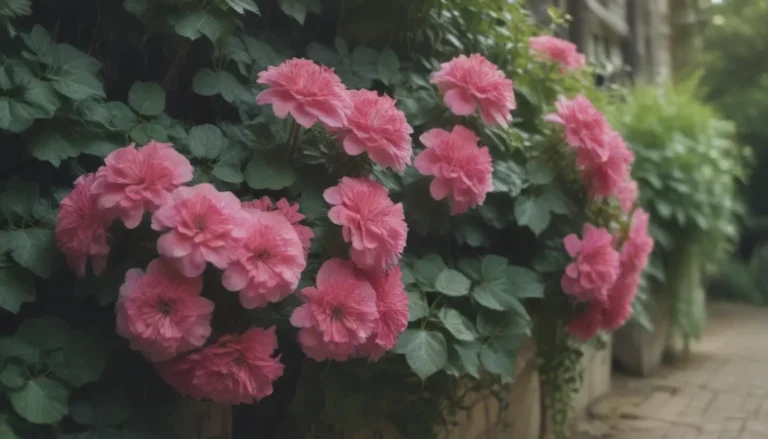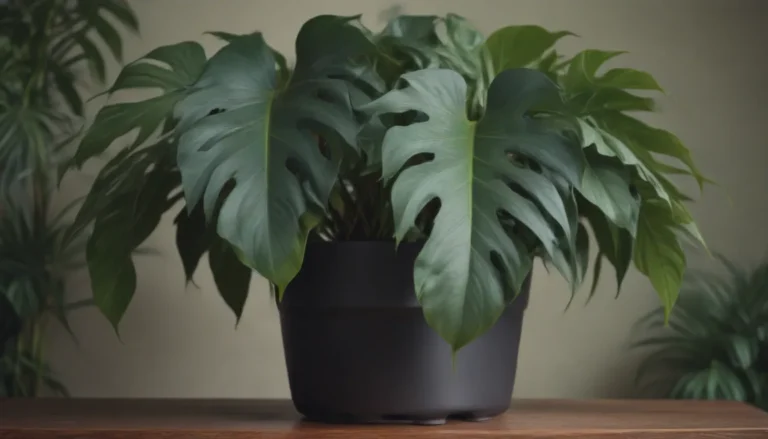The Ultimate Guide to Growing & Caring for Lemon Button Ferns

If you’ve ever had trouble keeping ferns alive indoors, you’re not alone. Ferns can be quite finicky and challenging to care for, but fear not! The lemon button fern (Nephrolepis cordifolia ‘Duffii’) is here to save the day. This delightful plant is a dwarf variety of the Boston fern and is known for its resilience and ease of care. With a lemony scent and compact size, the lemon button fern is the perfect houseplant for anyone looking to add a touch of greenery to their indoor space.
Getting to Know the Lemon Button Fern
The lemon button fern, also known as the button sword fern, erect sword fern, little-leaved sword fern, or fishbone fern, is a charming plant that is sure to brighten up any room. Here are some key things to know about this plant:
- The leaves of the lemon button fern give off a refreshing lemony scent when crushed.
- This fern is compact in size, making it ideal for indoor growing.
- It thrives in medium, indirect light and prefers acidic soil to thrive.
Lemon Button Fern Care Tips
Taking care of your lemon button fern is easier than you may think. Here are some essential care tips to help your fern thrive:
Light
- Lemon button ferns prefer medium, indirect light.
- They can also tolerate low light or bright light conditions, but direct sunlight should be avoided to prevent leaf burn.
Soil
- Provide your lemon button fern with acidic soil that is moist, loamy, and well-draining.
- While they are adaptable and can do well in various soil conditions, a standard houseplant soil works best for these ferns.
Water
- Keep the soil consistently moist by watering your fern at least once a week.
- Avoid waterlogging the soil, as it can lead to root rot.
Temperature and Humidity
- Lemon button ferns thrive in warm, humid conditions.
- Ensure your fern is placed in an area with sufficient humidity, especially if your home tends to be dry.
- Placing the fern near a small humidifier or in a high-humidity room like the bathroom can help maintain optimal conditions.
Fertilizer
- Apply a balanced fertilizer diluted to half strength every few months during the growing season.
- Lemon button ferns are light feeders, so be cautious not to over-fertilize.
Types of Lemon Button Ferns
In addition to the lemon button fern, there are other cultivars that make great houseplants. Some common varieties include:
- Nephrolepis cordifolia “Petticoat”
- Nephrolepis cordifolia “Flumosa”
Pruning Your Lemon Button Fern
While lemon button ferns do not require aggressive pruning, it is essential to remove dead or browning fronds to maintain the plant’s health. Here’s how you can prune your fern:
- Use sharp scissors or pruning shears to cut near the base of each frond.
- Pruning dead fronds will help keep the plant tidy and encourage new growth.
Propagating Lemon Button Ferns
Propagating lemon button ferns is a simple way to create new plants and control the size of your existing fern. Here’s how you can propagate your fern through division:
- Carefully divide the rhizomes to create new plants.
- Repot the divided sections in suitable containers with well-draining soil.
Potting and Repotting
When potting or repotting your lemon button fern, consider the following tips:
- Use containers that take longer to dry out, such as plastic or glazed terracotta pots with drainage holes.
- Repot your fern in the spring when roots start to poke out of the soil.
Dealing with Common Pests
While lemon button ferns are relatively pest-free, they can occasionally attract pests like aphids and spider mites. Ensure proper care to prevent infestations:
- Maintain proper light, temperature, and water levels to deter pests.
- A healthy plant is less susceptible to pest infestations.
Troubleshooting Common Problems
If you encounter issues with your lemon button fern, here are some common problems and solutions:
Brown Crispy Fronds
- Brown, crispy fronds indicate a lack of water and humidity.
- Ensure regular watering and consider using a pebble tray or humidifier to increase humidity.
Wilting Leaves
- Wilting leaves can result from overwatering or too much sun.
- Check for mushy stems, as this may indicate overwatering, while sun damage presents with wilted leaves only.
Leaves Turning Yellow
- Yellowing leaves can be caused by excessive sun exposure or overwatering.
- Adjust the plant’s location to avoid direct sunlight and monitor watering practices.
Fun Facts About Lemon Button Ferns
- Lemon button ferns are non-toxic to dogs and cats, making them safe for pet owners.
- Misting can temporarily increase humidity, but using a humidifer or a pebble tray for long-term moisture is more effective.
- Lemon button ferns are slow-growing plants, so be patient and enjoy the gradual growth over time.
In conclusion, the lemon button fern is a delightful plant that is easy to care for and adds a touch of nature to any indoor space. By following these tips and guidelines, you can ensure that your lemon button fern thrives and remains a beautiful addition to your home. Happy planting!





